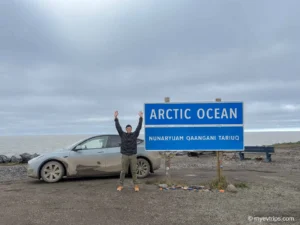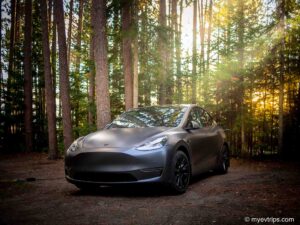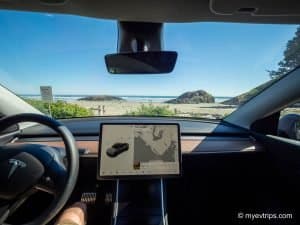When I read the now-infamous CBC article titled “Family ditches electric truck on drive from Winnipeg to Chicago after charging troubles“, I was immediately skeptical. As someone who’s crossed Canada multiple times in an EV and ventured off the beaten path, I knew there had to be more to the story.
The idea that driving a Ford Lightning from Winnipeg to Minneapolis and on to Chicago was a logistical nightmare sounded more like poor planning than poor infrastructure.
That said, EV travel in this part of North America isn’t perfect. There are real gaps and frustrating hiccups. But the bottom line? With planning, apps, and a bit of flexibility, the Minnesota to Manitoba route is completely doable — and in many ways, enjoyable.
Breaking Down the CBC EV Trip Gone Wrong
The CBC article documents real challenges with Manitoba and rurual USA EV charging infrastructure, including some non-functional chargers and rural coverage gaps. However, a closer examination reveals that proper trip planning could mitigate many of these issues. Also, user error may have played a role.

- Infrastructure Challenges:
- Some chargers were non-functional
- Rural areas have sparse coverage
- Occasional station accessibility issues
- The Ford Lightning Case:
- The driver pushed their range limits in cold weather
- The charger in question had been successfully used by others that same day (per PlugShare data)
- The article doesn’t confirm whether the driver checked real-time charger status
- Critical Context:
- EV range varies significantly with temperature and driving conditions
- Third-party apps like PlugShare provide real-time charger status updates
- Proper planning (buffer range, backup chargers) prevents most issues
The article accurately reports infrastructure gaps but could better emphasize that:
- Many “charger failures” may be user errors. What happened? What didn’t work exactly?
- Available tools exist to verify charger functionality
- Responsible trip planning is essential for EV travel, for the time being.
While Manitoba and rural charging networks need improvement, many negative experiences stem from pushing range limits without proper preparation – a nuance the article underplays.
READ MORE: How Much Battery Degradation Do I Have after 3 Years of Ownership?
My Route: Sudbury to Winnipeg (via Minnesota)
Wanting to test this for myself (and, admittedly, wanting to prove people wrong), I took a southern route through the U.S. on my return from the East Coast. I had just completed a coast-to-coast road trip that brought me through Newfoundland and all the way to Saint Pierre, France, so I was more than ready for what little charging the road ahead had.
Also, having done the stunning northern Ontario drive above Lake Superior several times, I figured I’d compare.
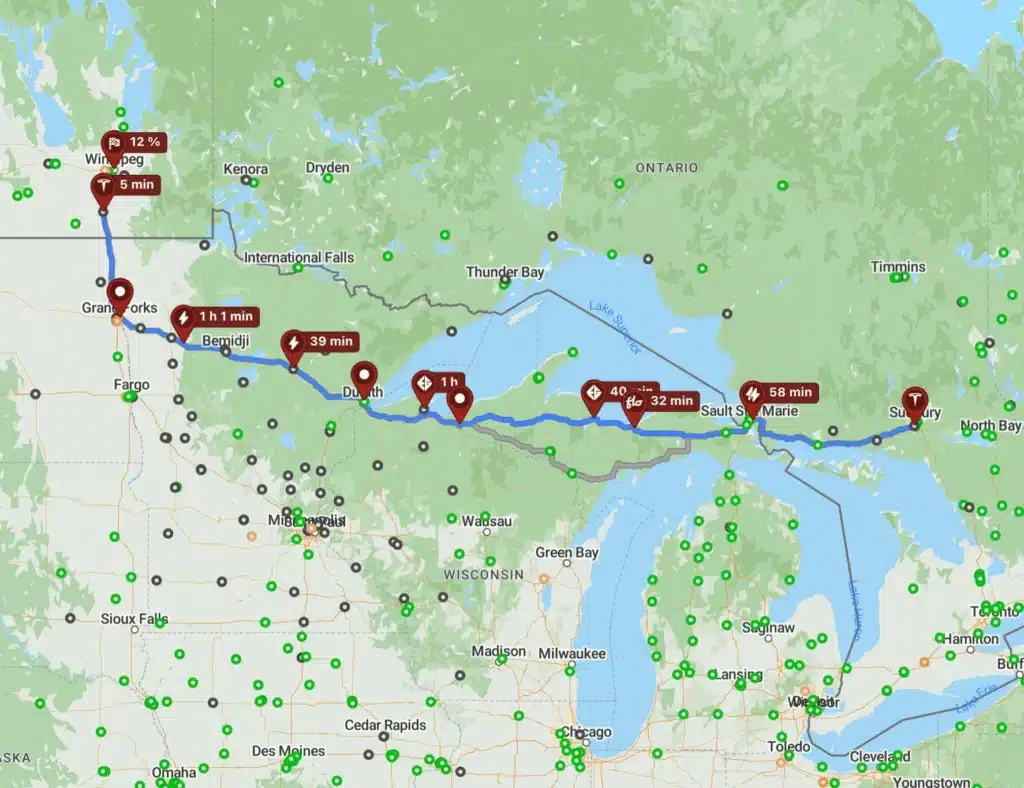
Looking at Plugshare and ABRP, charging options along the route were slim, to say the least.
Day 1: Sudbury to Ironwood, Michigan
I left Sudbury after a top-up at a Supercharger. My first stop was Sault Ste. Marie, where I grabbed snacks at an Italian grocery before crossing the International Bridge into Michigan.
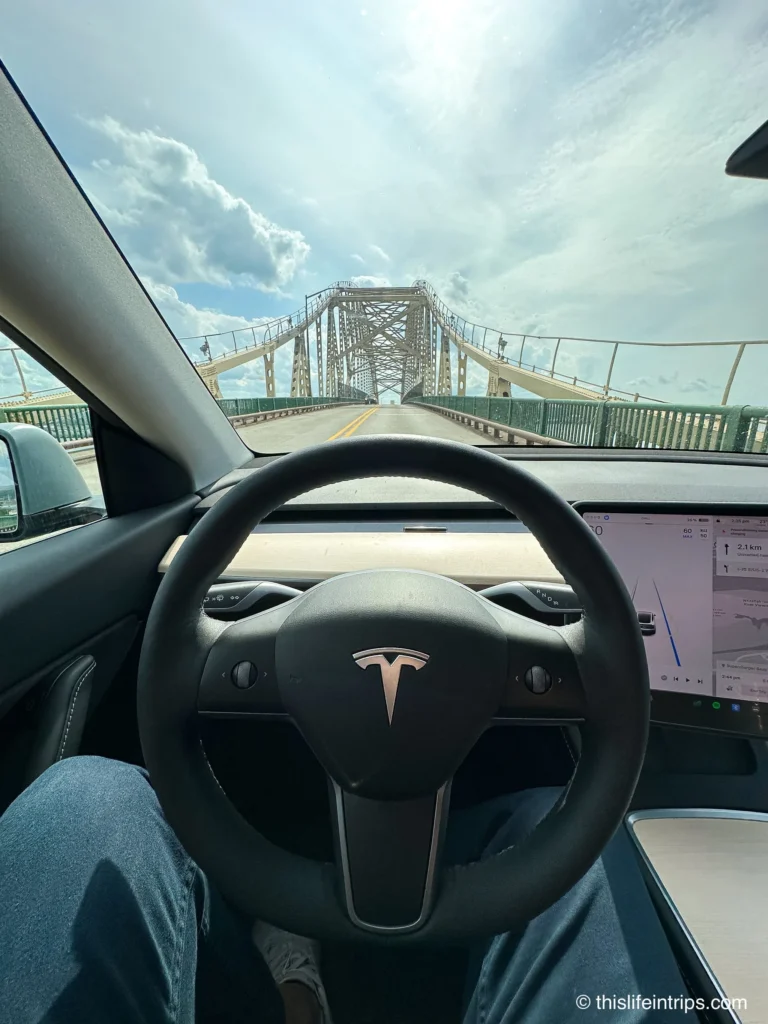
I debated a scenic detour to the Great Lakes Shipwreck Museum — they have an L2 charger there — but skipped it due to time and charging anxiety. There was a lengthy charging gap ahead, and I wasn’t willing to risk it.
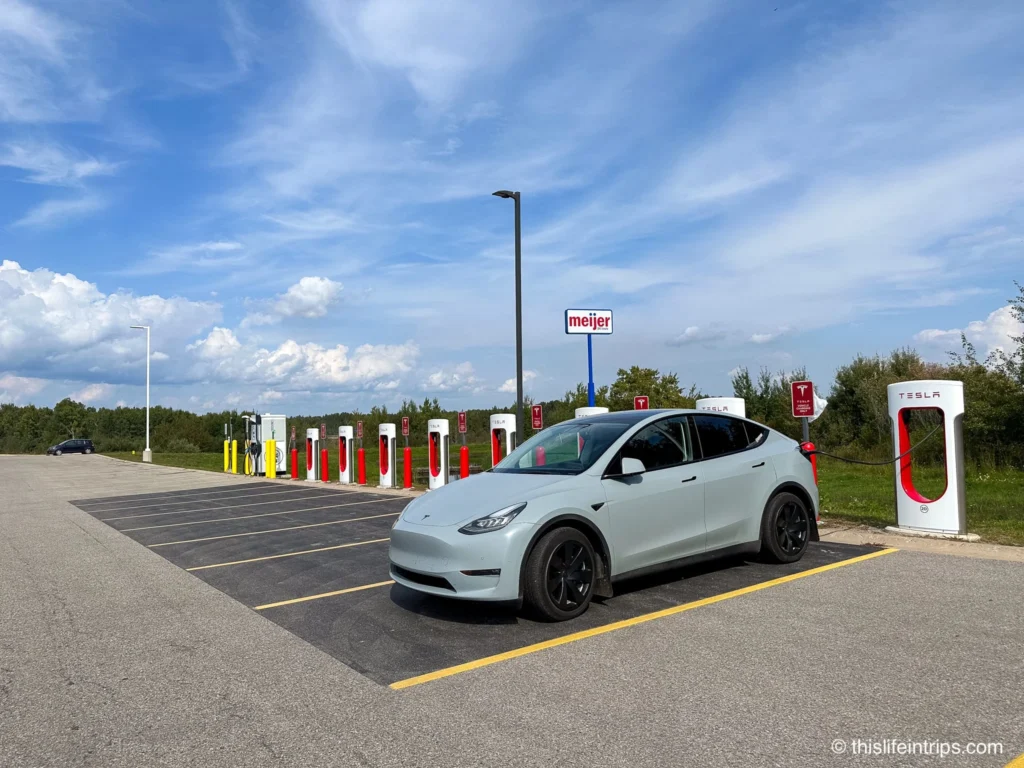
My goal was Ironwood, where PlugShare showed a Level 2 charger downtown. Reviews mentioned it being broken, but I had a backup plan: trickle charging at a hotel.

Sure enough, the charger didn’t work. I called around and found a Days Inn that let me plug in — but it was probably the worst hotel I’ve stayed at during any of my EV travels. Would not recommend.
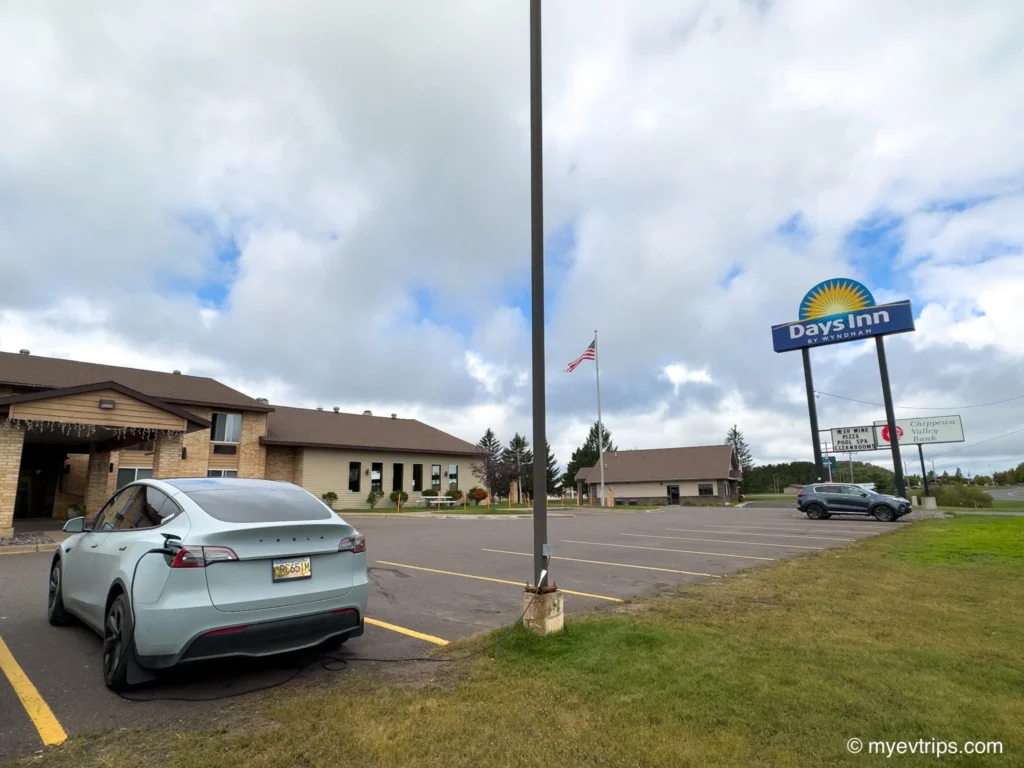
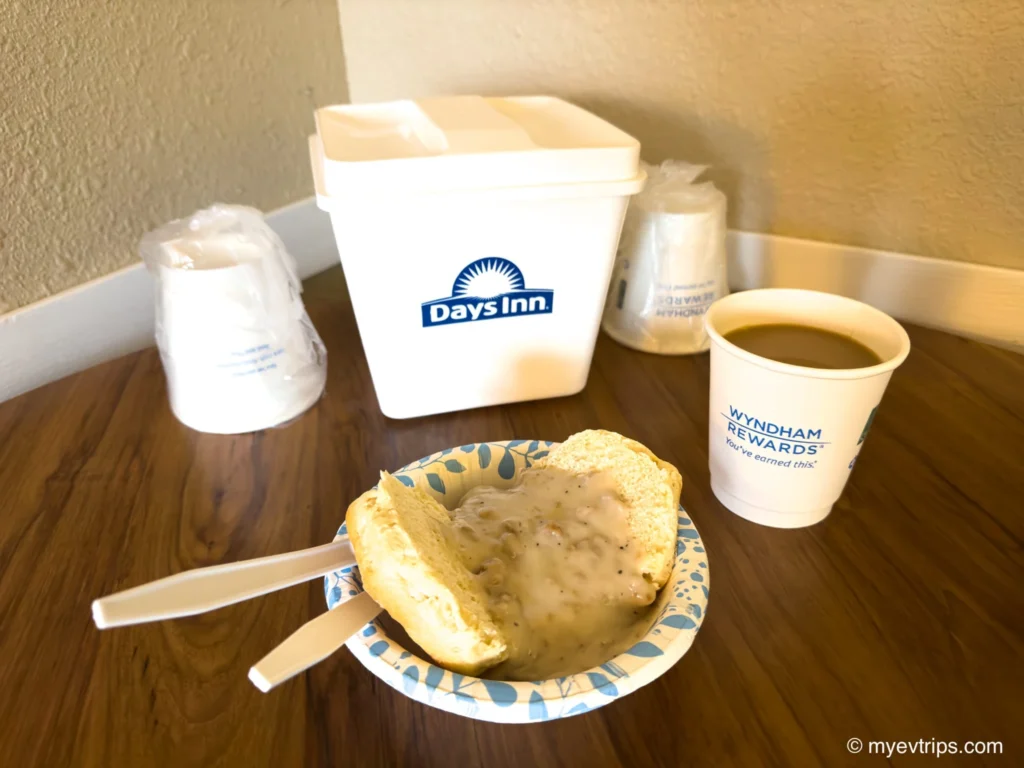
I let the car charge overnight (and into the next morning) to ensure I could make it to Duluth should the charger in the next town not work either. This wasn’t ideal, but it worked — again, planning makes all the difference.
Day 2: Ironwood to Duluth and Beyond

Ashland, Wisconsin was my next stop. Thankfully, the L2 chargers here worked perfectly. I enjoyed a relaxing lunch at a cozy café while topping up. The town was great… aside from the Trump bumper stickers and multiple sets of truck nuts, of course.
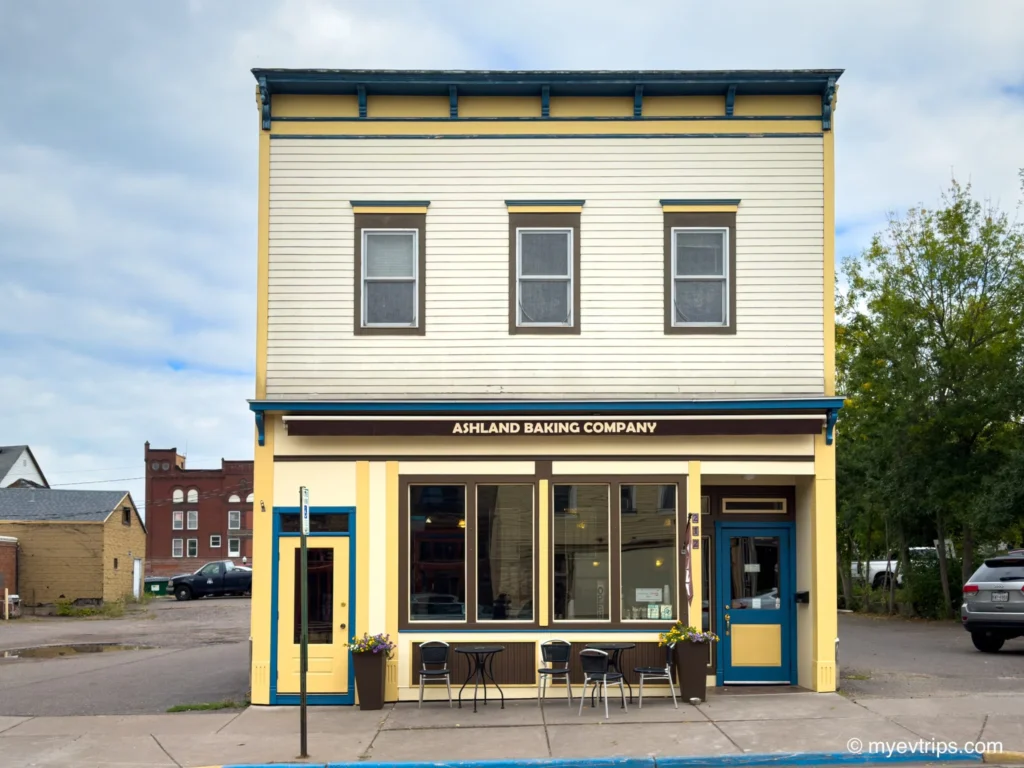
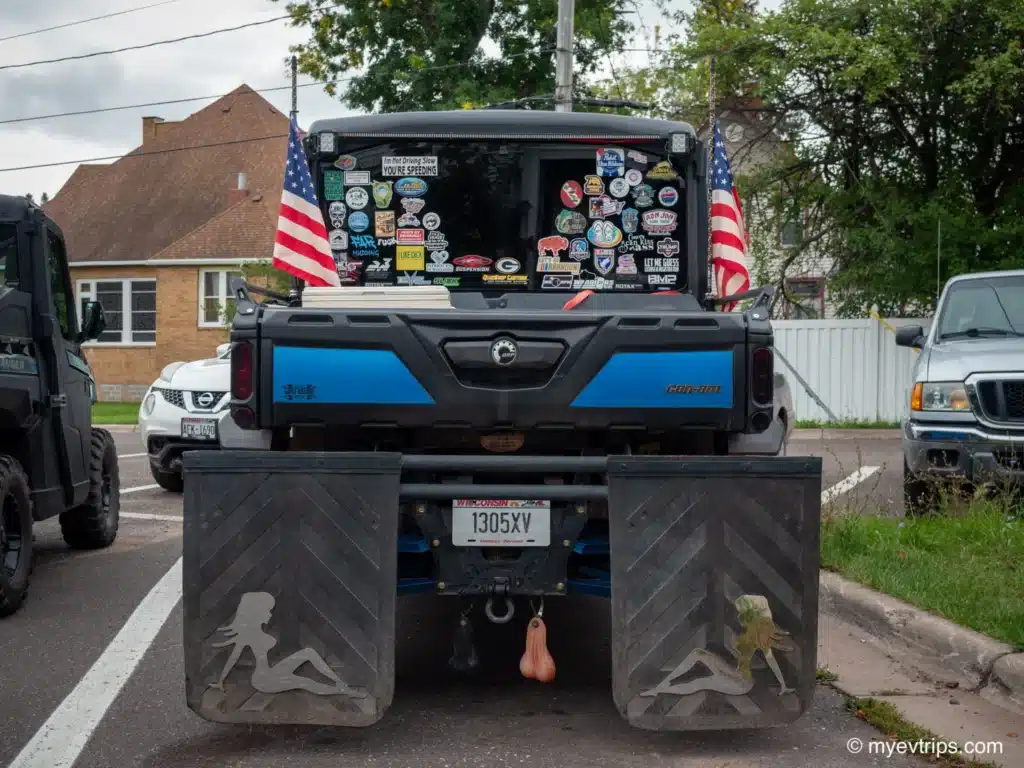
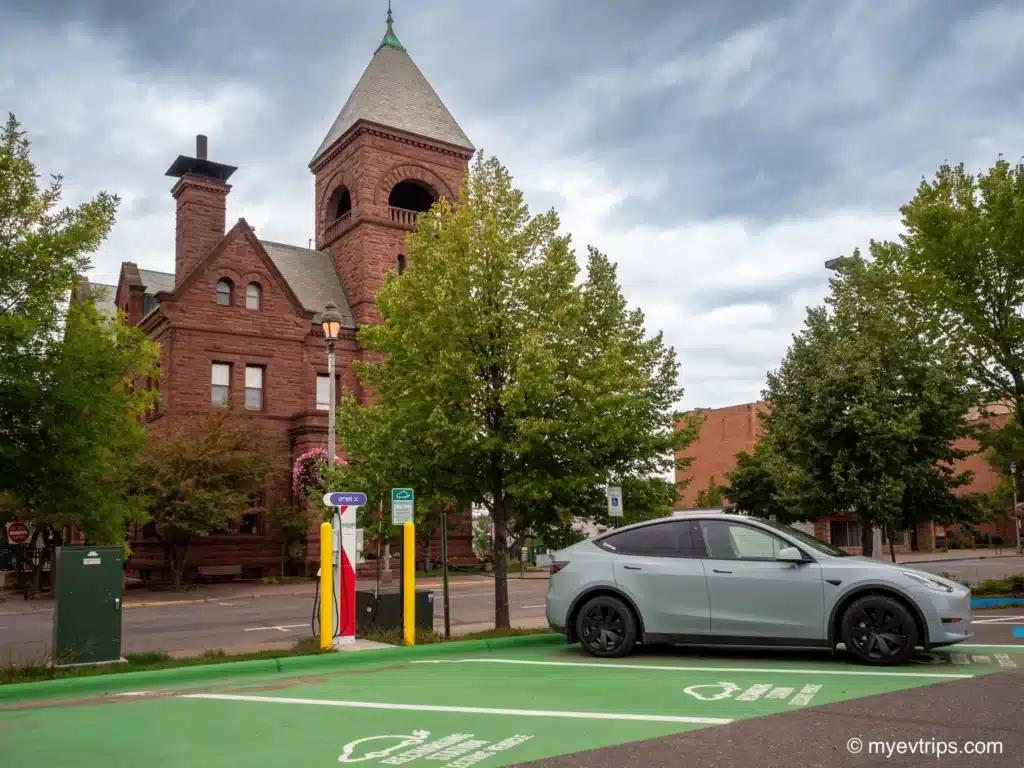
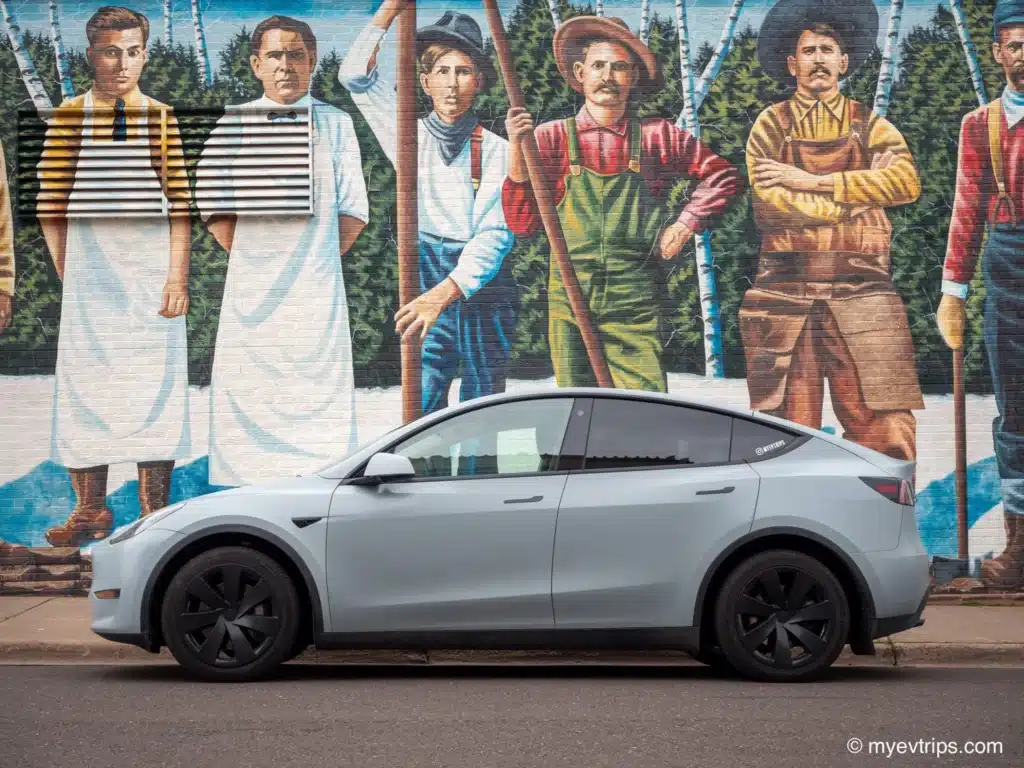
On the way into Duluth, I found a free charger Epicurean Factory Outlet. I took the chance to shop and picked up handmade wooden kitchen gear. Later, I stopped in Duluth’s trendy Lincoln Park Craft District and charged behind the Love Creamery while exploring the hood.
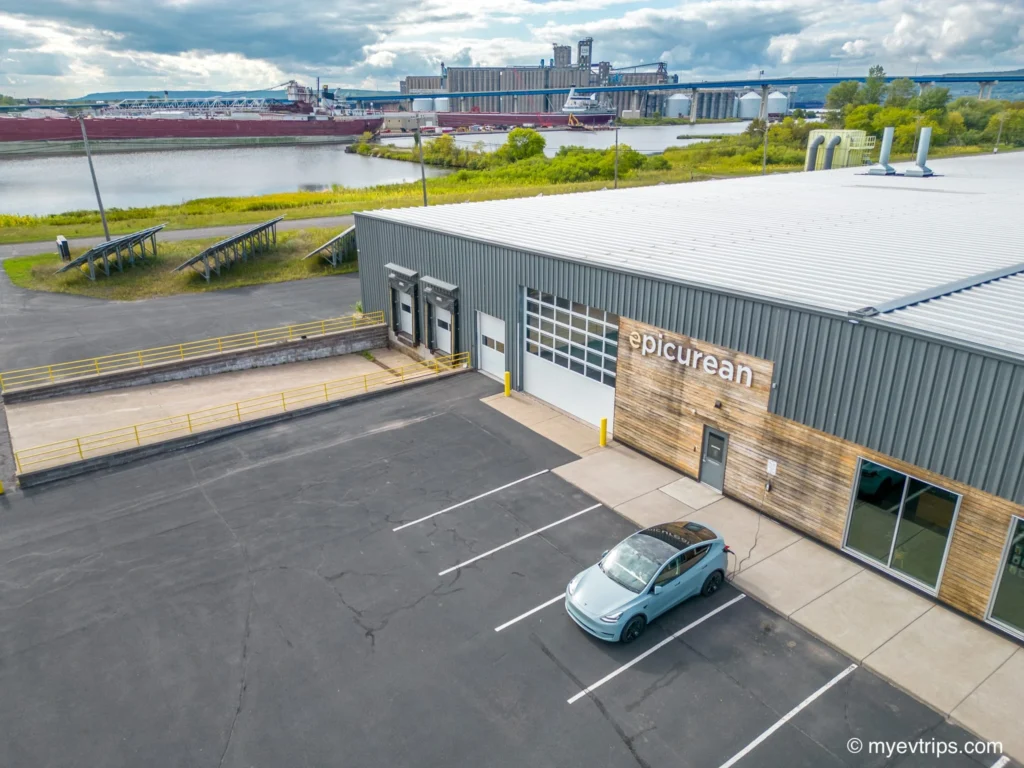
I had some great bannock tacos from Hungry Hippy Tacos and took them to go, enjoying them with a pint on the patio at Bent Canoe Brewing before rolling down to the waterfront.
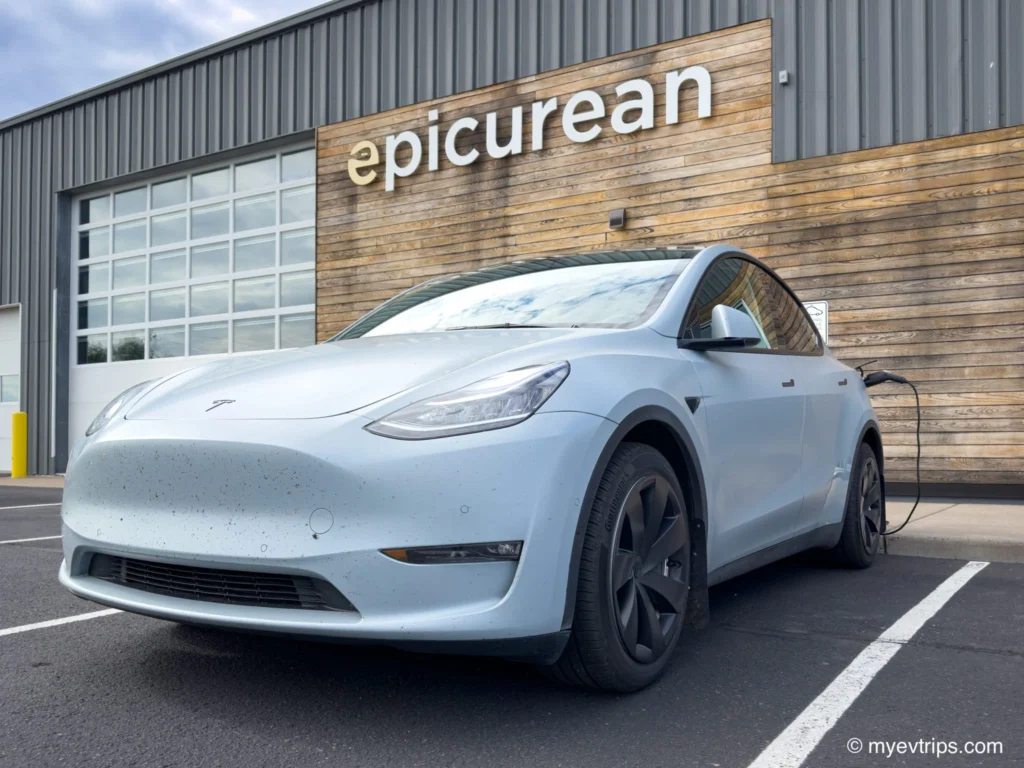
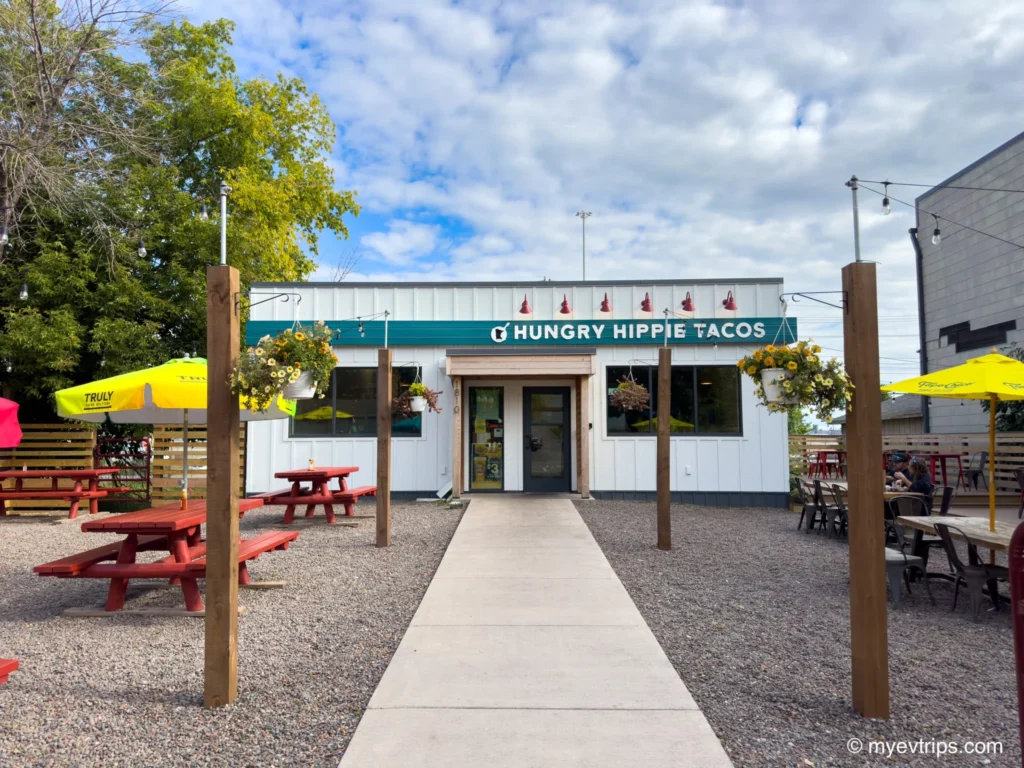
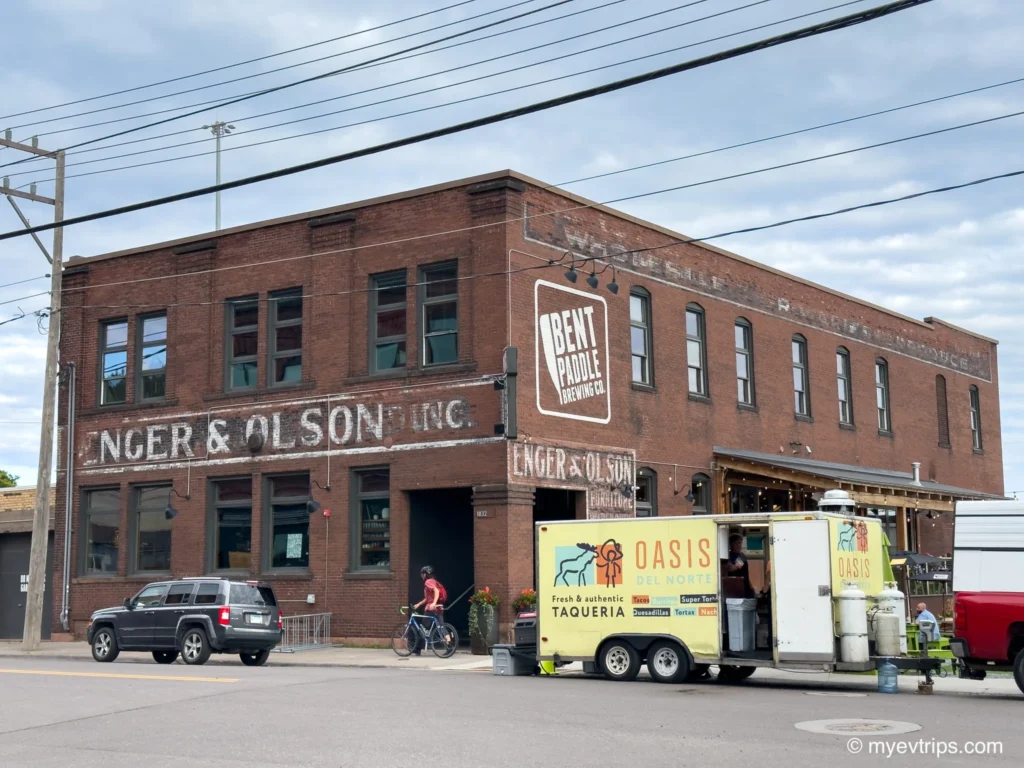
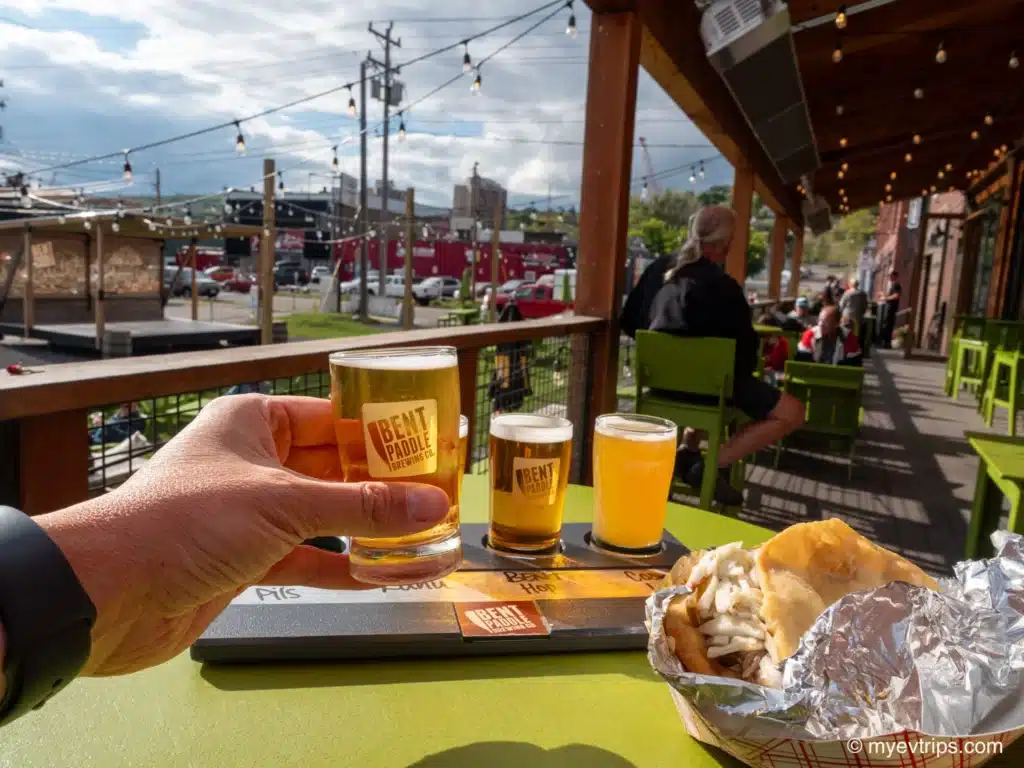

I made my way to a free charger near Canal Park and started to charge when a Polestar driver pulled up.
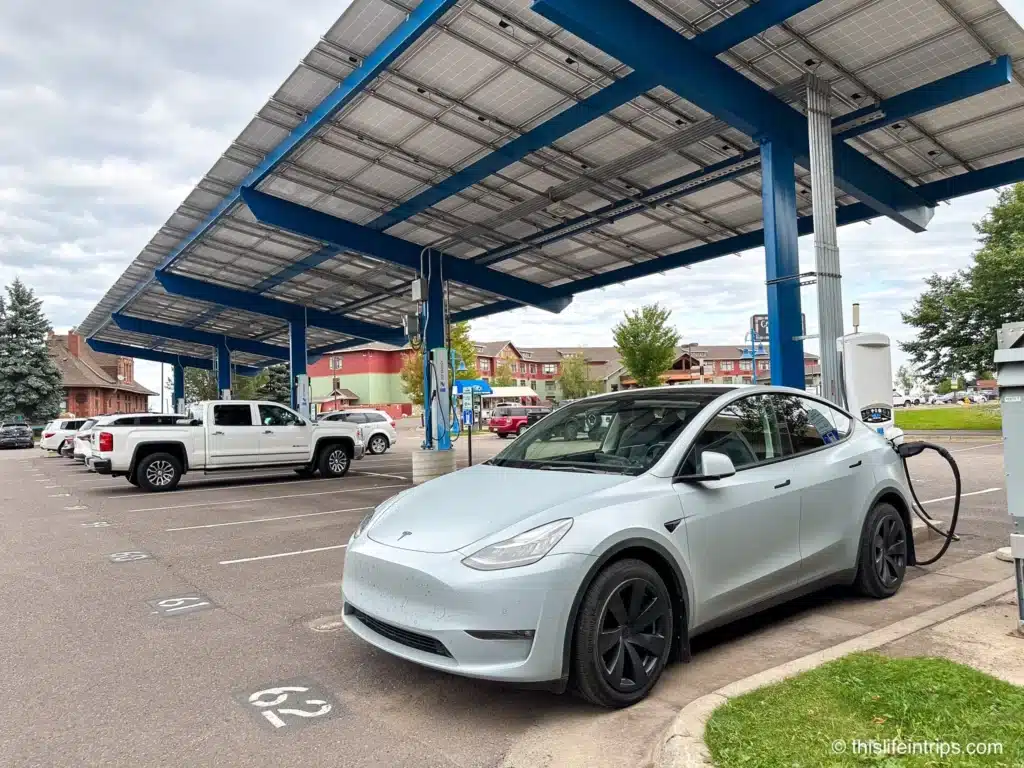

I felt bad as I could’ve just gone to the Supercharger down the road (it wasn’t open to other vehicles at the time) so I offered to take a quick 10-minute lap with my bike and come back so he could plug in. He was more than patient and excited that I wanted to check out his hometown. That kind of courtesy is what makes the EV community special.
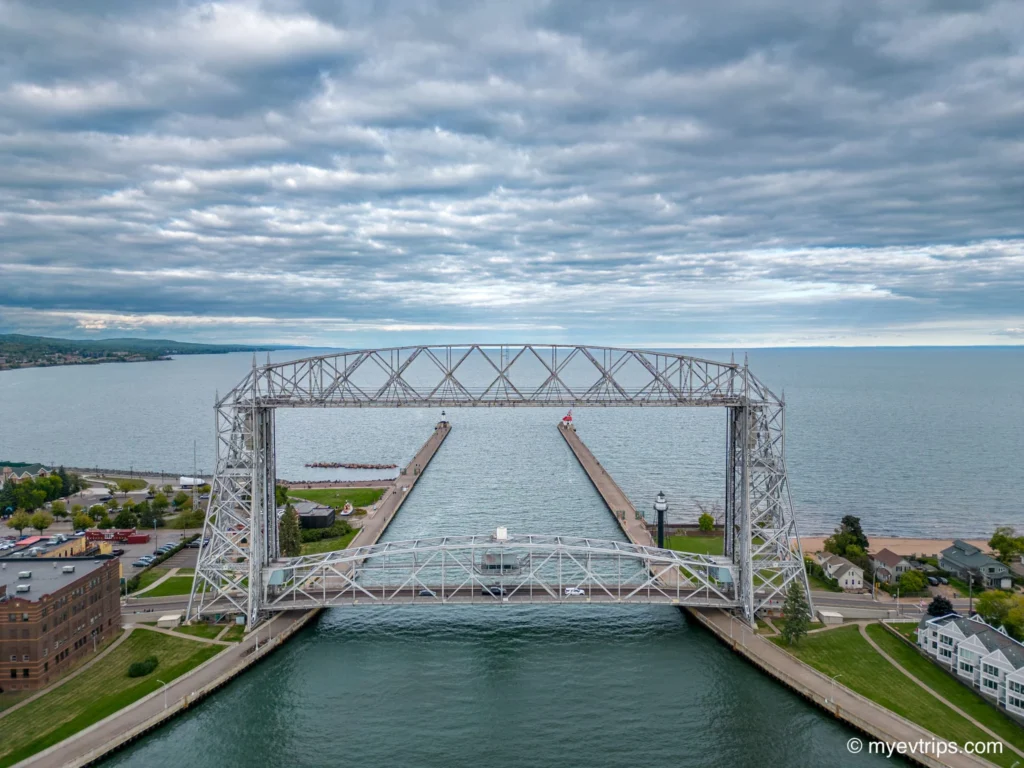
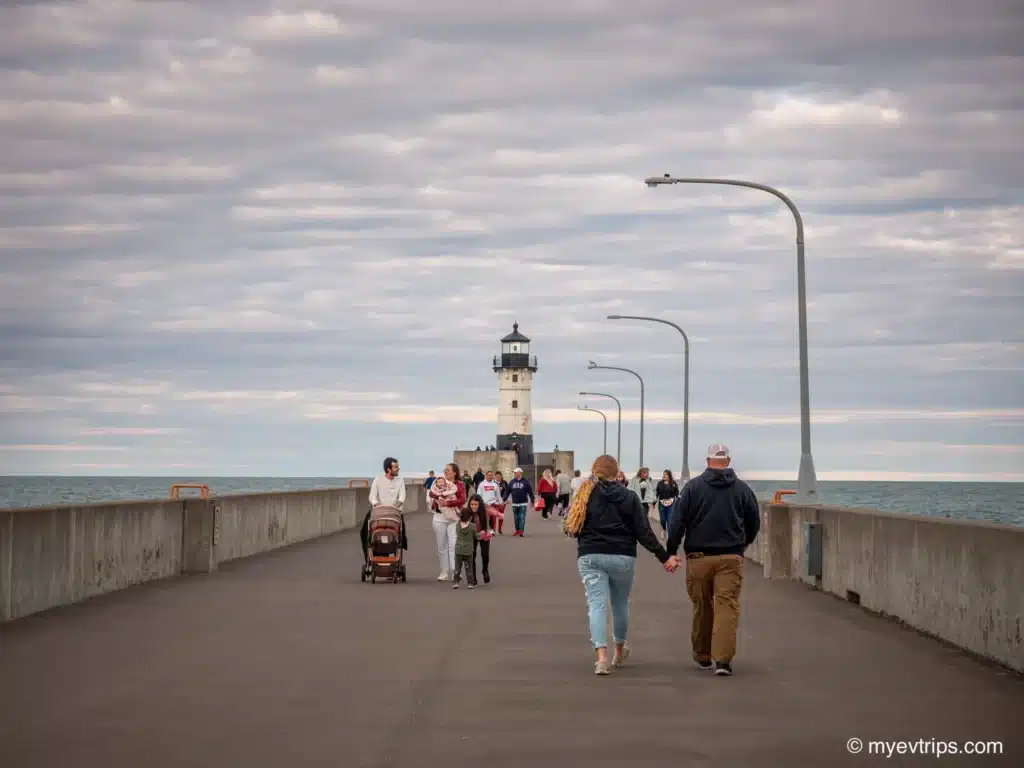
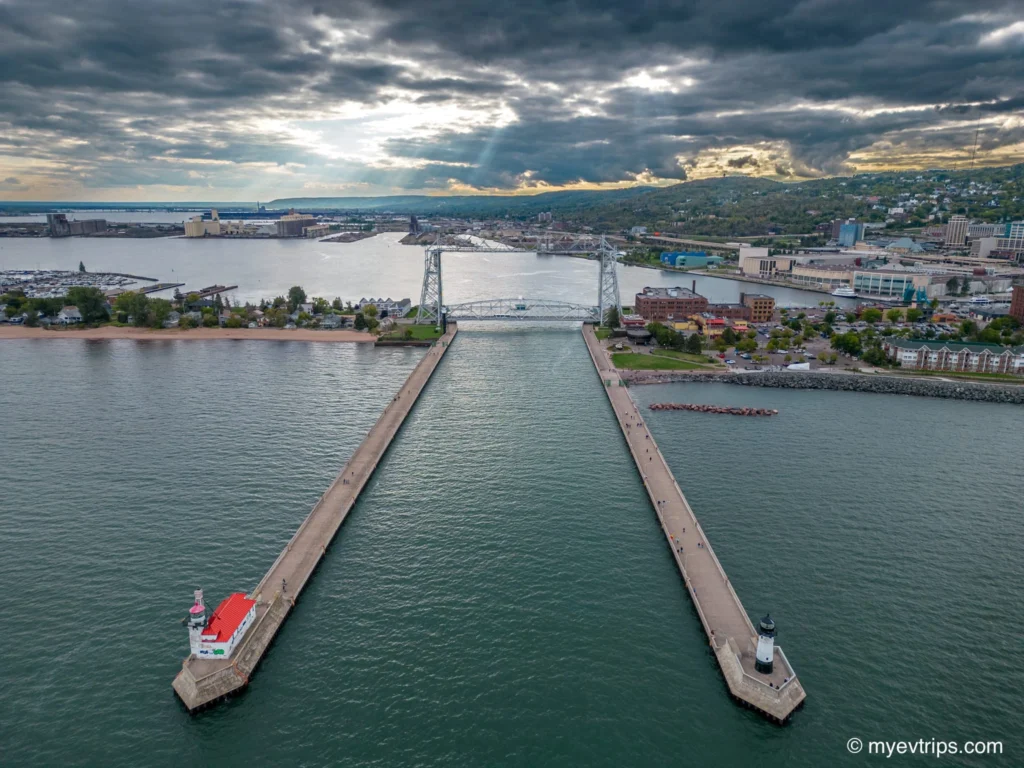
Duluth to Grand Forks: Back on the Supercharger Network
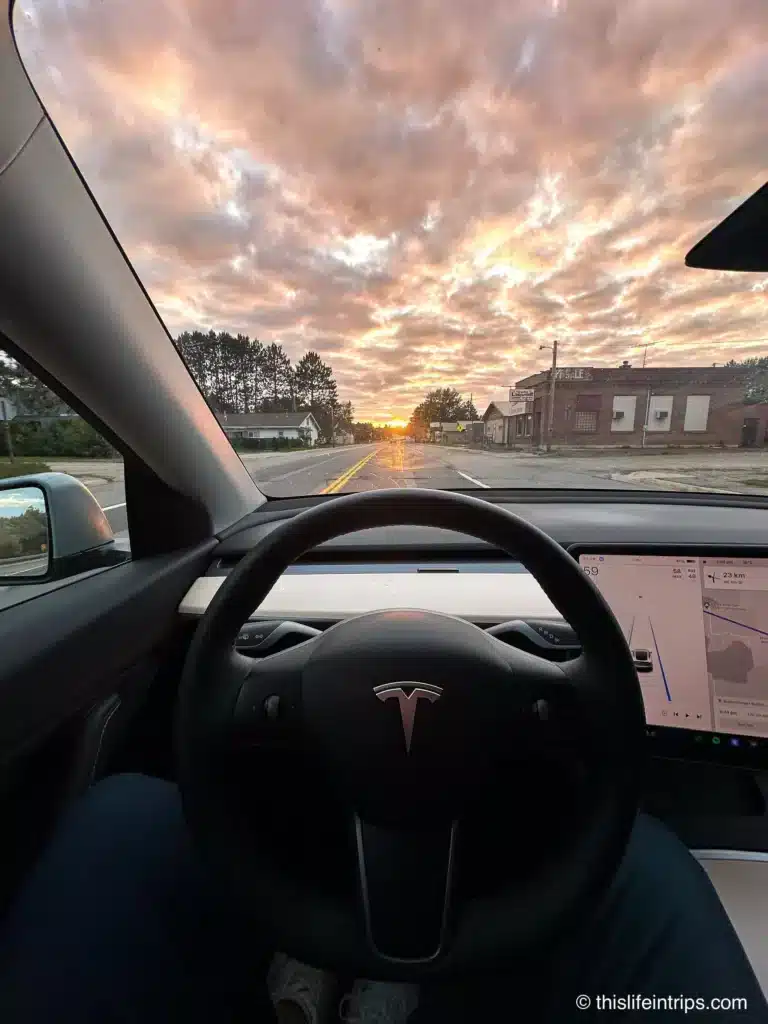
No real plans that night — I just wanted to see how far I could go. I stopped to top up at a Supercharger in Bemidji, MN (where I also grabbed a terrible gas station coffee), then pushed on all the way to Grand Forks. Along the way I passed through some beautiful forests and caught a nice sunset.
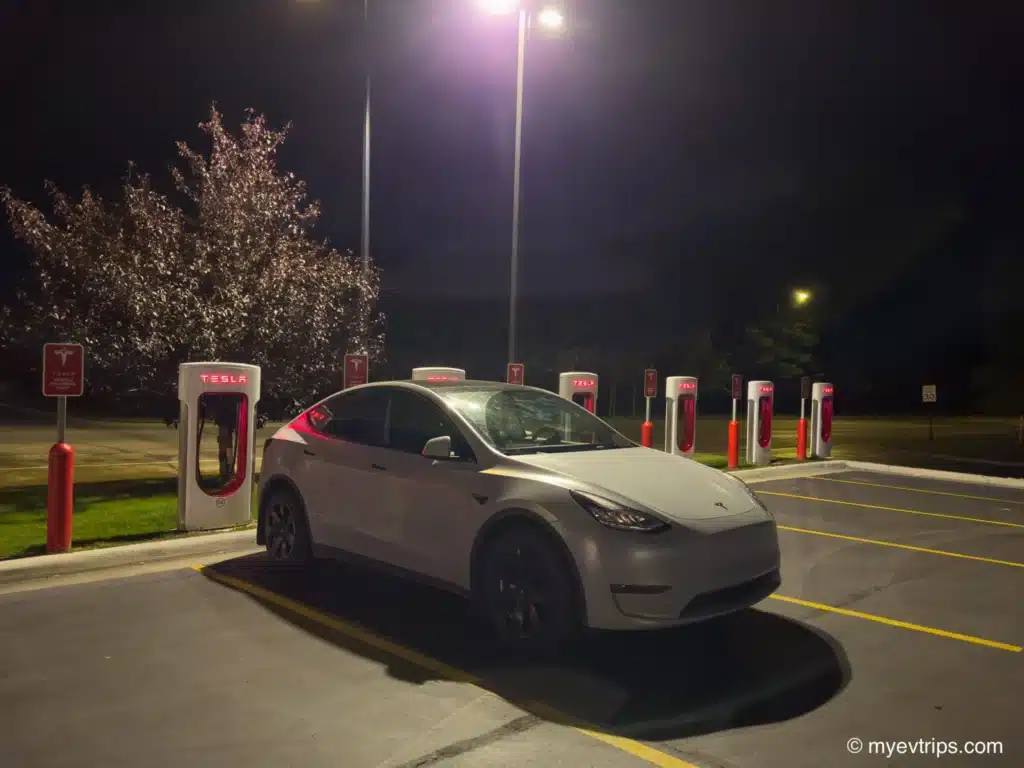

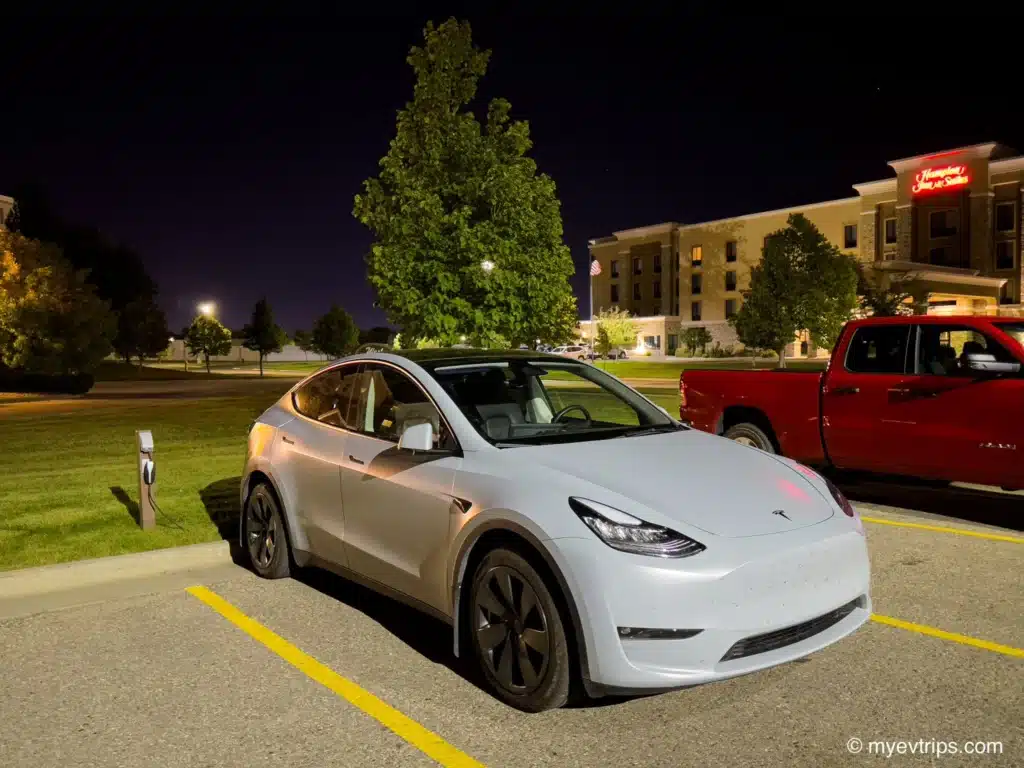
I stayed at a Marriott on the outskirts of town next to the Supercharger and trickle-charged again overnight. No issues here — just smooth, stress-free EV travel the way it should be.
Final Stretch: Grand Forks to Winnipeg

Before crossing the border back into Canada, I topped up at the Supercharger in Grand Forks then again the Supercharger in Morris, Manitoba. Then I grabbed lunch at George’s Burgers and Subs — a local favourite.
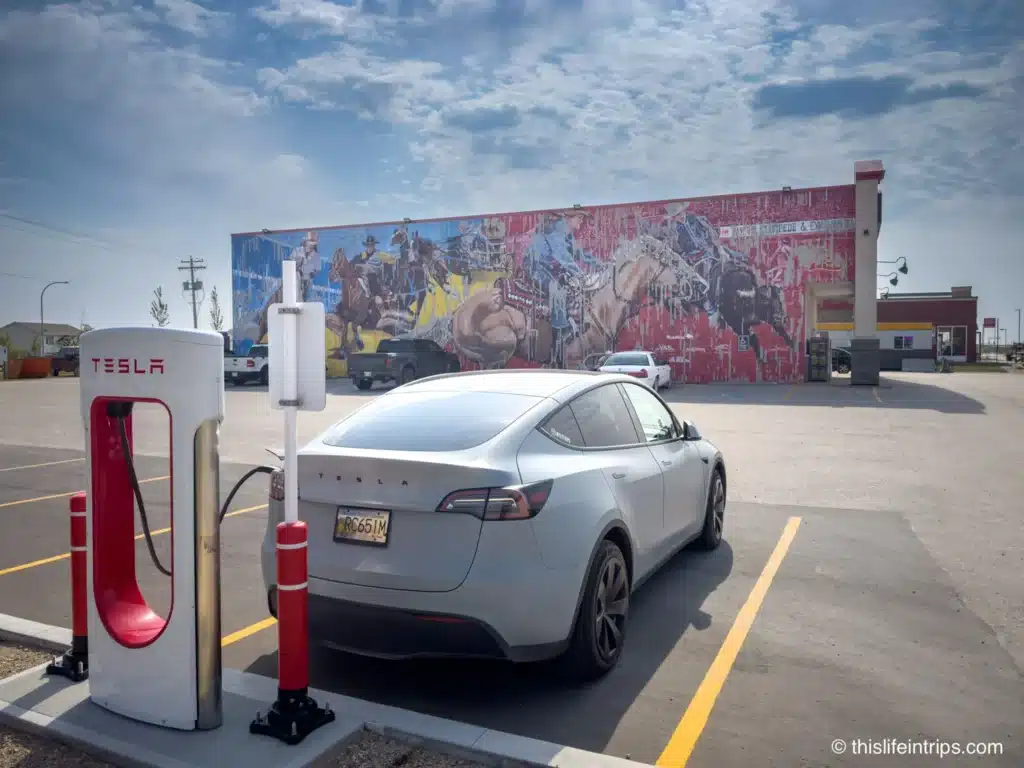
Since I was staying in Winnipeg for a few days, I didn’t need a hotel with charging. I trickle charged from the lot and had no problems.
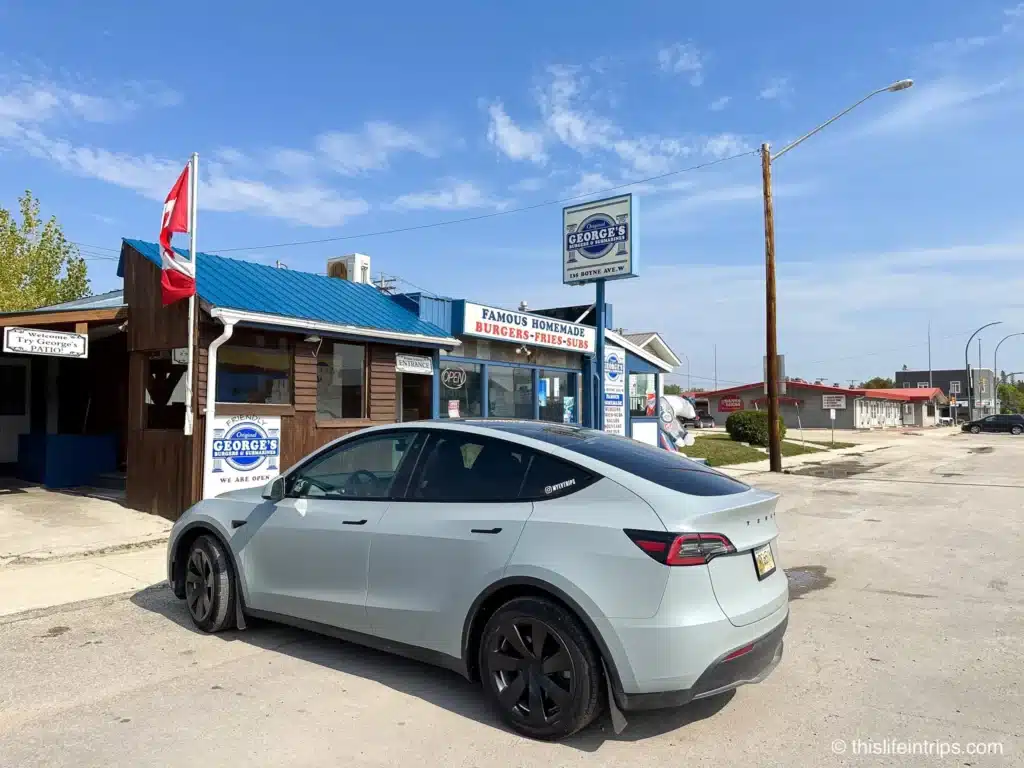
The Real Challenges (and How to Work Around Them)
Let’s be clear: the CBC article isn’t entirely wrong. The Winnipeg to Minneapolis route does have few chargers, especially if you’re not driving a Tesla. And yes, some stations are poorly supported as I found.
But:
- Real-time apps like PlugShare, ChargeHub, and ABRP make a massive difference.
- Checking ahead to verify charger functionality helps avoid surprises.
- Charging overnight at hotels (even if trickle) is better than nothing.
That said, unlike the driver in the CBC article, I wasn’t driving A-to-B as quickly as possible. I was sightseeing, eating local food, exploring new towns, and testing the route.
It wasn’t perfect. But it was possible — and often fun.
North vs South Shore of Lake Superior: Which Is Better?
I’ve done both.
- The northern Ontario route above Lake Superior? Stunning. Scenic. Packed with wildlife, rugged cliffs, and ample charging (if you plan).
- The southern U.S. route? Can be more direct, but less exciting. Fewer lakeside stops. A few bland towns. But still doable with the right tools.
If you’re doing a Canada EV road trip, I highly recommend the northern route. The southern route only had a few areas actually along Lake Superior (unless you detour) so not overly scenic. That said, I really liked exploring Duluth.
READ MORE: Northern New England EV Road Trip Report
Conclusion: CBC Was Wrong… But Only Half Wrong
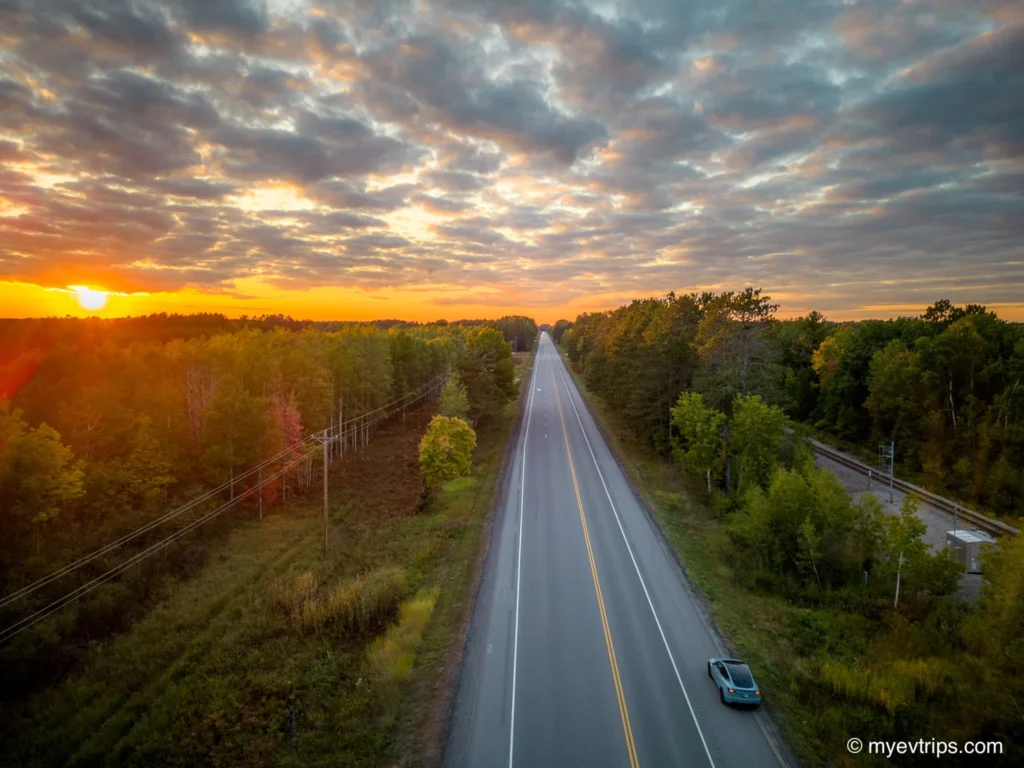
The CBC piece made it sound like an EV road trip from Winnipeg to Minnesota was near impossible. That’s simply not true.
What is true: the infrastructure isn’t great in parts of North Dakota and northern Minnesota. Ford didn’t have access to the Supercharger network at the time of the drive but does now so, things have gotten better.
What’s also true: you need to plan. This isn’t the gas-and-go era — not yet. It blows my mind that people have those expectations. Do you think the first Model Ts were driving across the country without gas infrastructure in place?
I made it from Minnesota to Manitoba with stops in Duluth and Grand Forks. I had a few charging hiccups, but thanks to planning (and backups), the trip kept rolling. Along the way I stumbled onto some cool spots, endured a couple of terrible coffees, and spent a night in a hotel I’d never recommend. That’s road-tripping.
Would I do it again? Maybe. But if you’re not in a rush, I’d point you toward the northern route—there’s something special about Canada’s wide-open spaces, especially once you’ve tackled big adventures like driving an EV to the Arctic Ocean or even simple but scenic journeys like Yellowknife to Edmonton.
Either way, don’t let one article scare you off. EV travel really shines when you plan, prepare, and embrace the surprises along the way. From dialing in your setup with things like Starlink for road trips or experimenting with comfort upgrades like the Aerogogo Tesla mattress, the experience becomes incredibly rewarding—often more than you expect.
Here are the Minnesota to Manitoba EV road trip stats as per ABRP. Note, my actual charging time was more with the overnight trickle charging at hotels.
Minnesota to Manitoba EV Road Trip FAQ
Can you drive from Winnipeg to Minnesota in an EV?
Yes, with proper planning and apps like PlugShare or ABRP, the Winnipeg to Minnesota route is very doable — even in a non-Tesla EV.
Are there Superchargers between Grand Forks and Winnipeg?
Yes — there’s a Tesla Supercharger in Morris, Manitoba, and one in Grand Forks. More stations are expected as infrastructure improves.
How long is the drive from Minnesota to Manitoba?
Roughly 6-7 hours depending on your route and border wait times.
Is Duluth EV-friendly?
Surprisingly yes. Free chargers at outlets and the waterfront, plus local cafes to hang out while you charge.
What’s the best EV route across Ontario?
For most people, the Trans Canada route through northern Ontario along Lake Superior offers the best scenery and charging balance for EV drivers.


